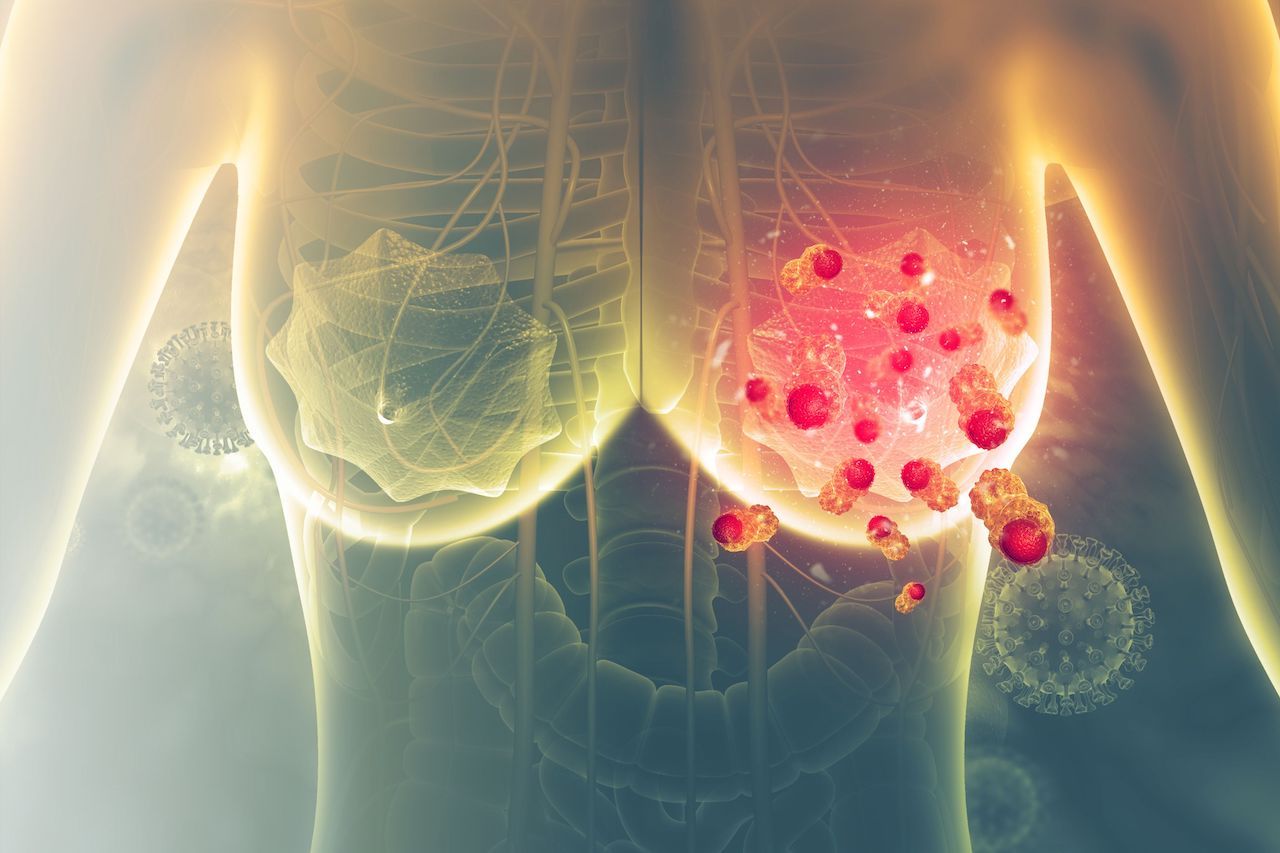Article
Diagnostic Delays From COVID-19 May Increase Cancer-Related Deaths, UK Studies Say
Author(s):
The next several years could bear witness to thousands of additional deaths from cancer that could have been prevented through routine diagnostic care that was delayed because of the coronavirus disease 2019 (COVID-19) pandemic, according to a pair of studies in The Lancet Oncology.
Breast, colorectal, esophageal, and lung cancers that could have been prevented through routine diagnostic care—referrals and screenings—instead could lead to almost 10% (n = 3291-3621) more deaths in England over the next 5 years because the coronavirus disease 2019 (COVID-19) pandemic led to delays in care, according to study results published today in The Lancet Oncology.
The authors of this first modelling study also predict that up to 20 years of life could be lost with each death, totaling 59,204 to 63,229 life-years lost, and that this will “reflect a substantial proportion of deaths in younger/middle-aged people.”
“Whilst currently attention is being focused on diagnostic pathways where cancer is suspected, the issue is that a significant number of cancers are diagnosed in patients awaiting investigation for symptoms not considered related to be cancer,” lead study author Ajay Aggarwal, MSc, MRCP, FRCR, PhD, London School of Hygiene & Tropical Medicine, said in a statement.
According to the authors, 30% to 40% of cancers in the United Kingdom are diagnosed through routine screenings and outpatient referrals, but there has been an 80% drop in urgent referrals since the lockdown began in March. Also during this time, a cancer diagnosis could only be confirmed if a patient went to an emergency department or got an urgent 2-week referral from their general practitioner (GP).
To reach their estimated conclusions, the authors extracted 2010 to 2012 cancer registration and hospital administrative data from the English National Health Service (NHS) on more than 93,000 patients (breast cancer, 32,583; lung cancer, 29,305; colorectal cancer, 24,975; esophageal cancer, 6744) whose cancer was diagnosed during those years, using 1 year from March 16, 2020, as the potential amount of time COVID-19 could disrupt diagnostic services and estimating out to 1, 3, and 5 years post diagnosis.
They then investigated what would happen if these patients’ cancers were instead diagnosed during the lockdown using either of the options mentioned previously. Their primary outcomes were net survival, additional deaths, and life-years lost compared with the time before the pandemic. The youngest patients were in the breast cancer cohort (mean [SD] age, 60.5 [12.6] years) and the oldest, the lung cancer cohort (69.8 [9.3] years).
By 2025, the colorectal cancer space could be affected the most, with a potential 15% to 17% (n = 1445-1563) increase in deaths from COVID-19—related diagnostic care. Breast cancer was a close second, with an 8% to 10% (n = 281-344) increase, followed by esophageal cancer with a 6% (n = 330-342) rise and lung cancer with 5% (n = 1235-1372) more deaths, all due to more advanced disease at diagnosis.
“These estimates paint a sobering picture and reflect the many young people who are affected by cancer in the prime of life during their most productive years,” noted study coauthor Professor Richard Sullivan, cancer policy and global health, King’s College London.
To overcome these setbacks in care the authors recommend 3 solutions:
- Run public health campaigns aimed at patients, GPs, and secondary care that focus on the detrimental health effects of not seeking care if persons suspect they have cancer.
- Provide health care workers with evidence-based information they can use to manage suspected cases of cancer.
- Increase routine and urgent diagnostic care and services by extending office hours and referring patients more often to NHS hospitals.
Perhaps most important, clear diagnostic criteria are needed so that patients can be prioritized when needed and to ensure “equitability” in care delivery, especially because primary care service levels continue to be lower than those from before the pandemic.
The second study, also a modeling study and published today, looked solely at the backlog of cancer care referrals from before the pandemic, which ended up being delayed even further due to COVID-19, and estimated the effects of the lockdown 10 years out. They also used a greater variety of cancers (up to 20; eg, colorectum, esophagus, lung, live, bladder, pancreas, stomach, larynx, oropharynx) and a longer range of years for diagnosis (2008-2017).
Data on tumor type were derived from Public Health England and data on cancer diagnoses, which resulted from a 2-week-wait referral pathway that was in place from 2013 through 2016, from the Cancer Waiting Times system from NHS Digital.
“Our estimates suggest that, for many cancers, delays to treatment of 2—6 months will lead to a substantial proportion of patients with early-stage tumours progressing from having curable to incurable disease,” the authors noted.
Their results show there could be 181 to 542 more deaths from cancer because patient referrals were delayed for an average 2 months due to the pandemic lockdown. This translates into 3316 to 9948 additional life-years lost for a referral backlog between 25% and 75%.
In addition, 401 to 1231 additional deaths could occur because diagnostic testing was delayed for 3 to 8 months after the lockdown. This would result in 7332 to 22,635 life-years lost for a referral backlog between 25% and 75%.
Overall, the authors arrived at a final estimate of there being a possible 84% decrease in referrals for care because of the lockdown compared with 80% in the first study. Delays of 6 months alone could reduce 10-year mortality by more than 30%.
Like the authors of the first study, the authors of the second study believe care for patients who could have cancer needs to be ramped up, especially if their referrals were put in before the pandemic, to minimize potential lives and life-years lost.
“Prioritisation of patient groups for whom delay would result in most life-years lost warrants consideration as an option for mitigating the aggregate burden of mortality in patients with cancer,” they conclude.
2 Commerce Drive
Suite 100
Cranbury, NJ 08512
© 2025 MJH Life Sciences® and AJMC®.
All rights reserved.





